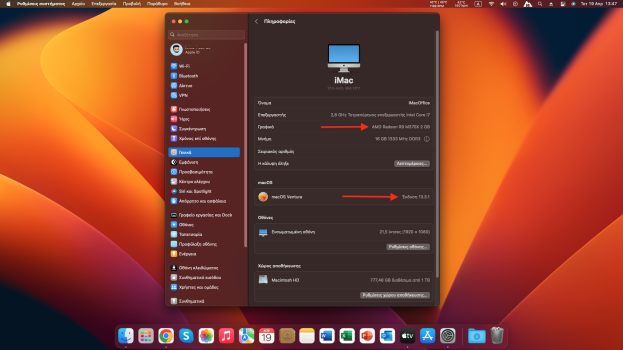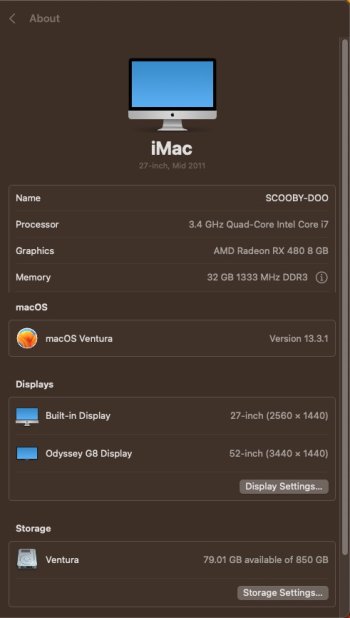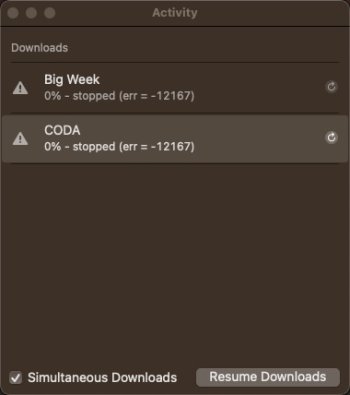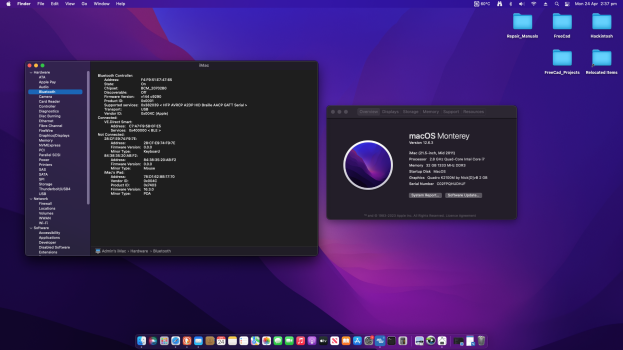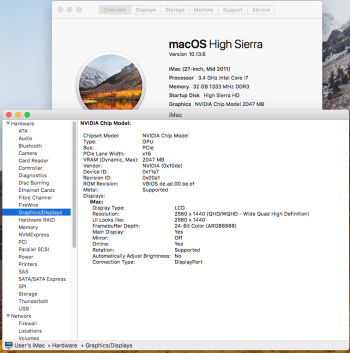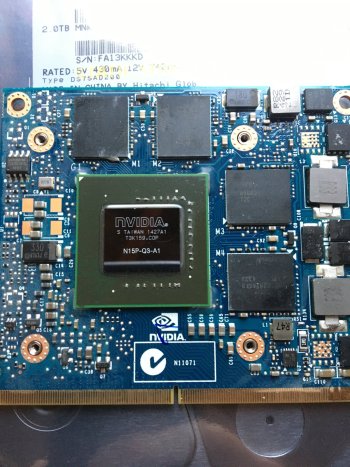I have updated to OCLP 0.64 and to Ventura 13.3.1.I have OCLP v0.6.3 and Ventura macOS 13.2.1 working well with DRM (AppleTV and Apple Music videos). It was not working until I upgraded to that version of OCLP.
Any chance you (or anyone) has Ventura macOS 13.3.1 on OCLP v0.6.3 installed and could tell me if there is still success with DRM on the iMac 2011's? I'd hate to mess up a good thing by upgrading to latest Ventura if it breaks DRM.
Apple TV works fine. Please see the attached extremely short video. Hope I don't break any copyright laws, but it was the only way to show you it is working as the screen capture (even for screenshots), does not capture the video playback of AppleTV. If the admins think it is not ok to post this video, they can ofcourse delete it.
Attachments
Last edited:


